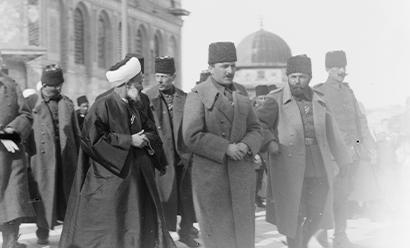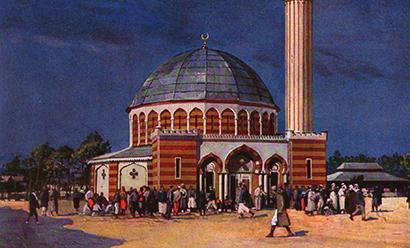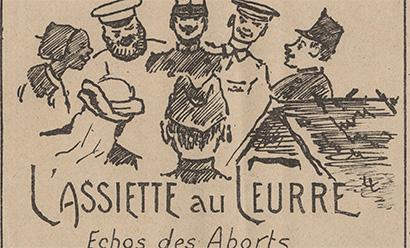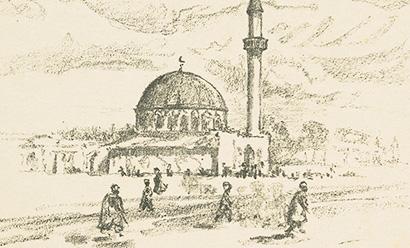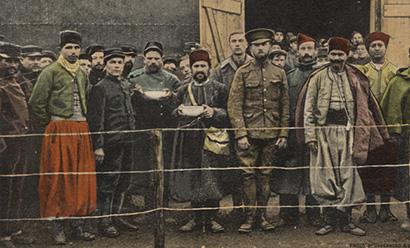German-Ottoman Alliance ›
Pan-Islam
In the years leading to WWI, Islam became a possible global unifying force. Print media and new communication tools like the telegraph quickly put people in contact across the world. Global Muslim populations were now able to communicate over thousands of miles. Muslims from Arabia to Indonesia could identify as one community, with leadership under the caliph.
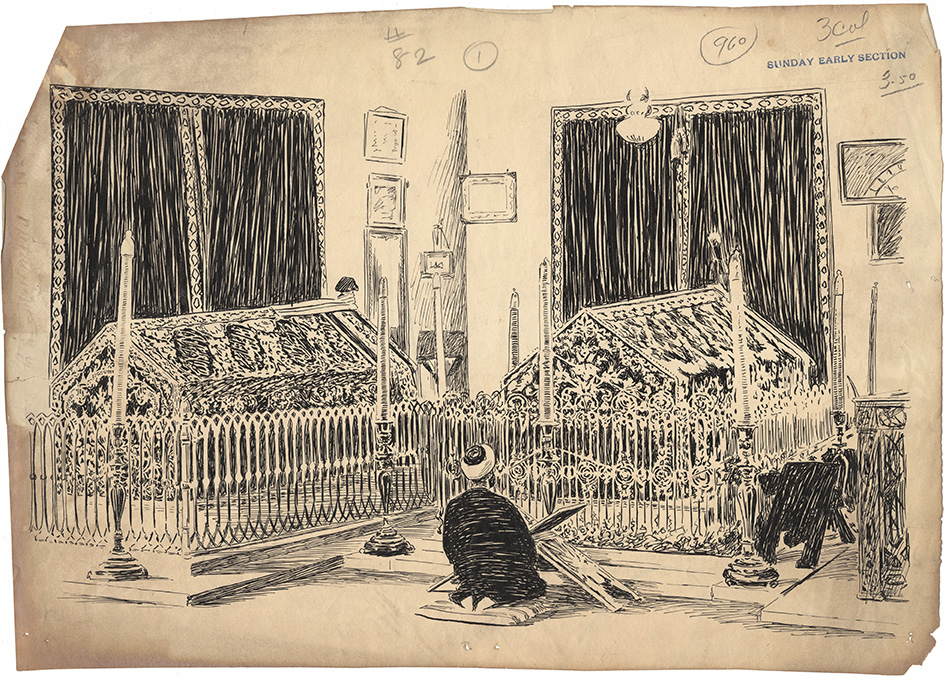
Drawing. n.d. 2020.116.3. National WWI Museum and Memorial.
The caliph headed the worldwide community of Islam, the ummah. The caliph traced his leadership role from Abu Bakr, the father-in-law of the Prophet Muhammad.
During WWI, Mehmed V was sultan of the Ottoman Empire and caliph. As caliph, Sunni Muslims in not only the Ottoman Empire but also Egypt and British-controlled India understood him to be the spiritual leader of their people. Mehmed V had surrendered all the sultan’s leadership authority to the Young Turk movement by 1914 and served in the position of sultan and caliph as a figurehead. His death in 1918 marked the beginning of the end of the 1300-year leadership of the caliphate.
In 1924, the Turkish Republic and its leader Mutsafa Kemal Ataturk formally abolished the caliphate.
“The caliph is the shadow of God on earth, the executant of his decrees; all Muslims should obey him, being thankful if he does right, patient if he does wrong.”
—Albert Hourani
"Our relations with countries inhabited by Muslims must be expanded and we all must strive for togetherness. As long as the unity of Islam continues, England, France, Russia and Holland are in my hands, because with a word [I] the caliph could unleash the cihad [holy war] among their Muslim subjects and this would be a tragedy for the Christians…. Altogether 250 million Muslims are beseeching God for delivery from foreign rule. They have pinned their hopes on the caliph, the deputy of the Prophet Muhammed. We cannot [therefore] remain submissive in dealing with the great powers."
—Sultan Abdulhamid (caliph and sultan before Mehmed V)
The notion of a unified Muslim world became known as "pan-Islamism." Great Britain, France, and Russia saw it as a potential threat to their empires.
Print, Photographic. Circa 1914 or 1915. 1983.41.120. National WWI Museum and Memorial.
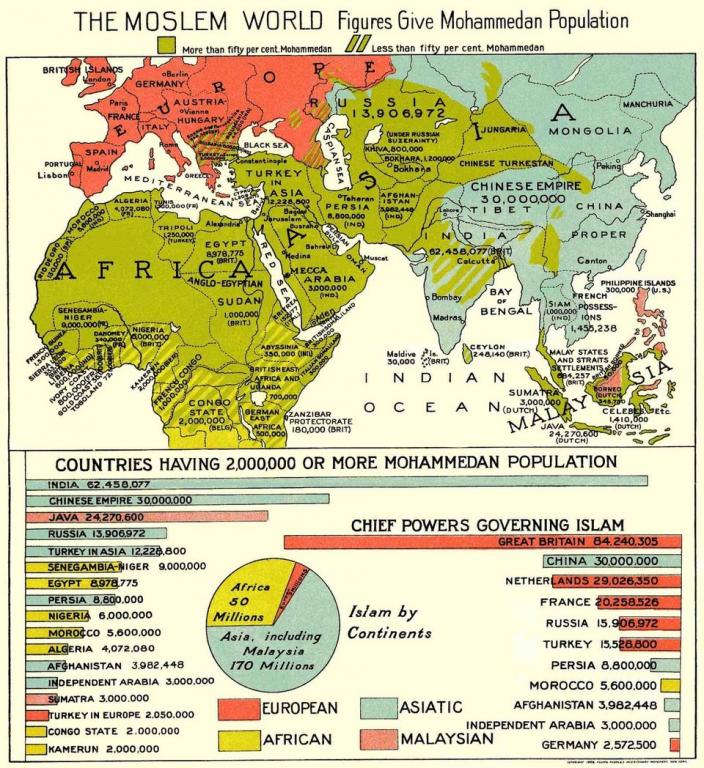
At the time of the war’s outbreak, Great Britain controlled Egypt, India, and other South Asian lands. This control meant that they ruled over the largest Muslim population in the world. France, with colonies in North Africa, was not far behind. Russia, as well, had large Muslim populations in the Caucasus Mountain region. Many subjects lived under oppressive conditions supporting the larger empires. If mobilized, a Muslim uprising could pose a threat to the imperial powers of Europe.
“There is one factor that might fall on our [the German] side of the balance and in the case of a world war might be made useful to us: that factor is Islam. As Pan-Islamism it could be played against Great Britain as well as against the French Republic; and if German policy is bold enough, it can fashion the dynamite to blow into the air the rule of the Western powers from Cape Nun in Morocco to Calcutta.”
—Dr. Karl Peters, German explorer, official of the Imperial Colonial Office, and Reichskommissar for the Kilimanjaro region of German East Africa
“[England] must… have the mask of Christian peaceableness torn publicly off her face… Our Consuls in Turkey and India, agents, etc. must inflame the whole Mohammedan world to wild revolt against this hateful, lying, conscienceless people of shopkeepers.”
—Kaiser Wilhelm II, July 30, 1914
Germany and the Ottoman Empire recognized that a unified Muslim movement could spark riots across the globe. This was an attractive option for both countries, who each had something to give to the cause and a wish to upend other empires.
- The Ottoman Empire was eager to topple encroaching European empires and held control of legitimate Muslim leadership in the caliph.
- Germany desired to expand their own imperial power and had the recent history of casting itself as the protector and friend of Muslim people.
